Fin rot is a common issue that many aquarium fish face and it serves as a clear indication of their health.
Picture your fish with once-colorful fins now torn and shrinking. This problem typically arises from stress or living conditions that are not ideal, making the fish more susceptible to bacterial infections. And, this is where when you start seeking how to treat fin rot.
However, don’t worry because we’ve provided a completed guideline on how to treat fin rot in detail, including– its symptoms, causes, best fin rot treatment, and aquarium salt for fin rot.
Your fish deserve every opportunity for survival, and we’re ready to guide you through this journey of how to treat damaged fish fins with the best fin rot treatment!
Disclosure: This article contains affiliate links. When you follow a link to purchase the products, I sometimes earn a commission, at no additional cost to you. Read my full disclosure here.
What is Fin Rot In Fish?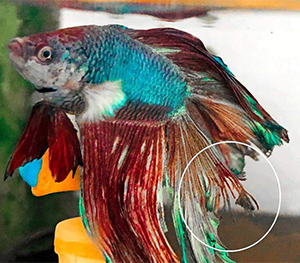
In a fish tank, there are many bacteria present in the water. These bacteria usually don’t pose any threat to the fish as their immune systems effectively keep them under control.
However, if a fish experiences stress, its immune system may weaken which creates an opportunity for harmful bacterial infections and diseases to occur. Fin rot is often caused by Aeromonas, Pseudomonas, or Vibrio bacteria.
What are the Causes of Fin Rot?
Bacterial infection is the direct cause of fin rot, but there’s more to it than just that. Stress plays a crucial role in paving the way for this condition.
Stressors that are commonly experienced by aquarium fish can put them at risk for developing fin rot and this is why people search for how to treat damaged fish fins. These stressors include various factors:
- Injury
- Overcrowding
- Aggression Among Tank Mates
- Inadequate Diet
- Poor Water Quality
Symptoms of Fin Rot
Fin rot is a very common illness that affects fish’s fins or tails causing them to deteriorate and appear frayed or torn. To identify possible cases of fin rot in your fish, carefully observe their fins and tail looking for the following indicators:
- Ragged Edges: Uneven fin and tail. (Looking for how to treat damaged fish fins? Stick to the end!)
- Discoloration: White, black, or brown discoloration appears.
- Inflammation at the Base: Inflammation around the base of their fin.
- Degradation: Certain parts of their fin or tail could exhibit signs of decay.
These symptoms usually coincide with decreased appetite, reduced activity levels, and potentially your fish staying near the bottom surface in the tank.
Fin Rot Treatment
As your fish’s health begins to decline due to fin rot, it is important to take action quickly through fin rot treatment. Time plays a significant role in the severity of the symptoms and overall impact on your fish. The good news is that there are several readily available solutions for fin rot treatment.
So, stop wondering how to treat fin rot and follow these steps for fin rot treatment;
- Remove the fish that is infected from the main tank right away to stop the bacteria from spreading to other fish. Putting it in a separate tank for fin rot treatment will create a safe environment and minimize harm to other fish in the tank.
- Determine why the disease occurred by assessing water quality conditions. Start fin rot treatment with testing kits that can measure pH levels, contaminants, ammonia, nitrate levels, and temperature of the water.
- Cleaning the tank thoroughly can have a surprisingly positive impact on fin rot treatment. While it does not completely eradicate existing infections, it certainly helps in avoiding bacterial spread.
- Get rid of old food and decaying matter in the tank, and use a substrate vacuum to remove waste. In severely affected tanks, it might be necessary to consider a complete disinfection process as part of fin rot treatment to eradicate bacteria.
- When dealing with fin rot, antibiotics, and medications can be quite effective. It is recommended that you consult with veterinarians who can prescribe potent antibiotics specifically tailored for your fish’s condition.
- As an alternative, you can consider using non-prescription choices such as Erythromycin, which is a widely used broad-spectrum antibiotic for fin rot treatment. Make sure to follow the instructions provided on the package for proper administration.
- It’s important to keep a close eye on your fish while undergoing fin rot treatment to identify any potential negative outcomes. Medications may have unintended side effects, so it’s crucial to remain vigilant.
Moreover, when you notice that frayed edges are no longer getting worse, discoloration has stopped and there is new growth appearing, this indicates that the fin rot treatment is getting successful. However, full fin recovery typically takes several weeks.
Can We Use Aquarium Salt as Fin Rot Treatment?
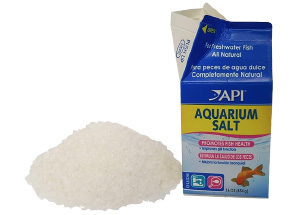
Quick view on Amazon
Available in: Australia, Canada, UK and US
Clean water and aquarium salt for fin rot are the most effective treatments for fin rot when it is mild.
Aquarium Salt is sodium chloride, which relieves fish stress and treats open wounds. Aquarium salt for fin rot is widely available and reasonably priced in most pet stores.
Like any medication, aquarium salt for fin rot shouldn’t be taken frequently or in extremely high doses. The maximum time you should use aquarium salt for fin rot on a fish is ten days. Long-term is not good for kidney and liver. Like with any medication, the right dosage must be used. A low dose of aquarium salt for fin rot should not be used as a “preventative” medication because it will eventually lose its effectiveness.
How to Use Aquarium Salt for Fin Rot?
Aquarium Salt for Fin Rot – Mild Treatment
Start by preparing a saltwater solution using clean water from the tank and a small amount of salt. It is important to dissolve the salt beforehand to ensure it doesn’t harm the fish.
- The recommended dosage for Aquarium Salt is 1 teaspoon per gallon of water. Adjust this based on the volume of water in your tank – half a teaspoon for half a gallon, 1 teaspoon for one gallon, etc. If the fin rot seems more severe, you can increase this dose slightly to 1.5 teaspoons per gallon.
- Carefully pour the prepared saltwater mixture back into your fish tank without disturbing them.
By following these steps and treating them with natural remedies like clean water and salt, you provide effective care for your fish’s fin rot condition.
Every day after treatment starts, follow up with a complete change of water in the tank. Make sure you change 100% of the water, as this will prevent bacterial or fungal growth in your aquarium.
Aquarium Salt for Fin Rot – Major Treatment
- Combine salt and clean tank water in a cup, using water from the quarantine tank to ensure the safety of the fish.
- Add 2 teaspoons of Aquarium Salt per gallon of water into the cup and stir well until fully dissolved.
- If fin rot persists, you can increase it to 3 teaspoons per gallon gradually. Begin with 2 teaspoons initially, then add a teaspoon after one hour to minimize stress on the fish.
- Carefully pour the dissolved saltwater mixture back into the tank.
This method effectively treats severe cases of fin rot by utilizing natural remedies such as clean water and salt solutions. Please note that after one day, perform a complete water change followed by adding 2 teaspoons of salt per gallon along with another teaspoon an hour later before reintroducing fish.
How to Prevent Fin Rot?
Like many health issues, preventing fin rot is incredibly important. Instead of waiting for fin rot cure after it occurs, a proactive approach can be more effective.
Here are some tips for fin rot cure and avoiding fin rot:
- Isolate New Fish: Before adding new fish to your tank, make sure you quarantine them properly. This reduces the risk of introducing any diseases.
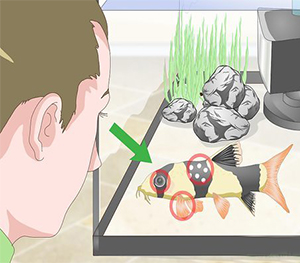
- Keep Water Clean: Maintaining high water quality is crucial. Regularly changing the water and staying on top of maintenance helps create a healthy environment.
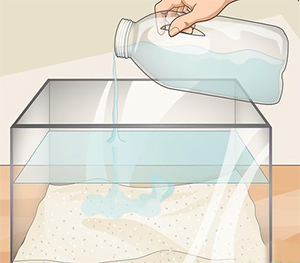
- Regularly Change the Water: Implement routine water changes to maintain a well-balanced environment and decrease the chances of fin rot caused by stress.
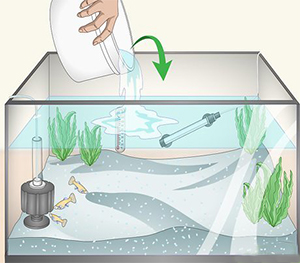
- Avoid Overcrowding: Follow appropriate stocking guidelines to prevent overcrowding, which can be a major source of stress.
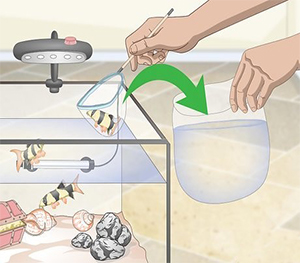
- Trim Aquatic Plants: Prune plants as necessary, being careful not to have any items that could harm fish by snagging their fins.
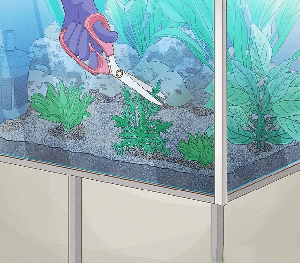
- Watch Out for Aggression: Keep an eye on aggressive behavior among fish and address it promptly to minimize stress levels.
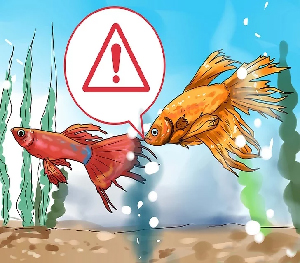
- Control Feeding Habits: Refrain from overfeeding and remove any uneaten food to keep the water quality optimal.
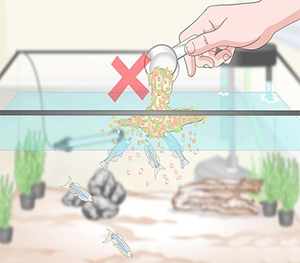
- Isolate Sick Fish: Quarantine sick individuals so as not to spread disease within the tank or aquarium.
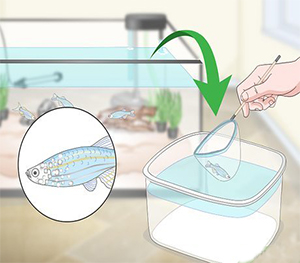
- Maintain Consistent System Health Checks: Perform regular cleaning and maintenance tasks in order.
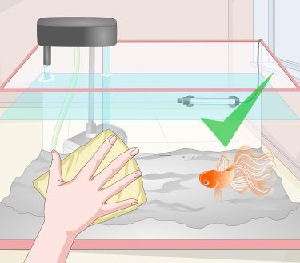
Which Species of Fish Are More Prone to Fin Rot?
Fin rot can impact various types of fish, but certain species are more prone to it. Betta Fish, for example, are particularly susceptible because they tend to chew on their fins when they feel stressed or bored. This chewing behavior creates opportunities for bacteria to cause infections in their fins.
Goldfish also have a higher likelihood of experiencing fin rot due to poor water conditions caused by the accumulation of waste in their tank. The presence of pathogens thrives in such an environment and affects the health of goldfish’s fins.
However, it is not only bettas and goldfish that can be affected by fin rot; other tropical fish species like Plecostomus, gourami, cichlids, tetras, mollies, and livebearing fish are also at risk.
It is crucial to provide proper care across these different varieties if you want to prevent fin rot.
Fin Rot Cure- How to know if Fin Rot is Cured?
Seeing improvements in the healing process of fin rot cure can be a bit slow, so it’s important to have some patience. It may take a few days for the medication to start effectively fighting the infection.
However, certain positive signs indicate the progress of the fin rot cure. For starters, if the fin rot hasn’t gotten worse, that’s definitely an encouraging sign of fin rot cure. Moreover, if you notice that your fish is no longer showing any new symptoms and their appetite and energy levels are returning to normal, these are all promising indicators of fin rot cure.
Another exciting aspect of recovery is when you start seeing new fin growth emerging, which might even display a different color than before.
Conclusion
To sum up, fish owners need to comprehend fin rot cure and tackle fin rot. Swiftly identifying, treating, and preventing this condition by providing care and a suitable environment will ensure that your aquatic friends are satisfied and in good health.



